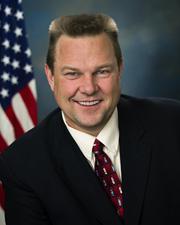0
International Protecting Girls by Preventing Child Marriage Act of 2011
3/14/2024, 12:36 PM
Congressional Summary of S 414
(This measure has not been amended since it was introduced. The expanded summary of the Senate reported version is repeated here.)
International Protecting Girls by Preventing Child Marriage Act of 2011 - (Sec. 3) Defines "child marriage" as the marriage of a girl or boy not yet the minimum age for marriage stipulated in law in the country in which the girl or boy is a resident, or where there is no such law, under the age of 18.
(Sec. 4) Expresses the sense of Congress that: (1) child marriage is a violation of human rights and its prevention and elimination should be a U.S. foreign policy goal; and (2) expanding educational opportunities for girls, economic opportunities for women, and reducing maternal and child mortality are critical to achieving the Millennium Development Goals and U.S. global health and development objectives, including efforts to prevent HIV/AIDS.
(Sec. 5) Authorizes the President to provide assistance, including through multilateral, nongovernmental, and faith-based organizations, to prevent child marriage in developing countries and to promote the educational, health, economic, social, and legal empowerment of girls and women.
Makes such assistance available for: (1) community-based activities that address beliefs or practices that promote child marriage, (2) activities to educate girls in primary and secondary school and keep them in age-appropriate grade levels through adolescence, (3) activities that allow adolescent girls to access health care services and proper nutrition, (4) assistance to train adolescent girls and their parents in financial literacy and access to economic opportunities, (5) education that helps remove gender stereotypes and the bias against girls used to justify child marriage, (6) assistance to create peer support and female mentoring networks and safe social spaces for girls, and (7) local advocacy work to ensure that governments and law enforcement officials are meeting their obligations to prevent child and forced marriage.
Directs the President to establish a multi-year strategy to prevent child marriage and promote the empowerment of girls at risk of child marriage in developing countries, and should include addressing the unique needs, vulnerabilities, and potential of girls under age 18 in developing countries.
Requires that such strategy: (1) focus on areas with high prevalence of child marriage; (2) encompass diplomatic initiatives between the United States and governments of developing countries, with attention to human rights, legal reforms, and the rule of law; (3) encompass initiatives in the areas of education, health, income generation, changing social norms, human rights, and democracy building; and (4) be submitted to Congress not later than one year after the date of the enactment of this Act.
Directs the President to submit a related report to Congress.
(Sec. 6) Expresses the sense of Congress that the President and all relevant agencies should collect and make available data on: (1) the incidence of child marriage in countries that receive U.S. foreign or development assistance where the practice of child marriage is prevalent, and (2) the impact of child marriage and the age of marriage on meeting development goals.
(Sec. 7) Amends the Foreign Assistance Act of 1961 to require that Department of State country reports on human rights practices include a description of the status of child marriage for each country in which child marriage is prevalent.




